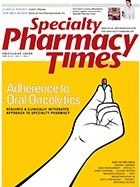Publication
Article
Specialty Pharmacy Times
Overcoming Challenges to Progress in Oncology
Author(s):
WHEN WE BEGAN publishing this annual oncology-focused issue of Specialty Pharmacy Times 6 years ago, in our wildest imagination we could not have dreamed of the astounding progress that would be achieved treating this horrific disease over just a few short years.
The most significant recent development in the cancer treatment landscape has been the emergence of new immunotherapies that block the PD-1/PD-L1 immune checkpoint across multiple tumor types. The approvals of nivolumab (Opdivo) and pembrolizumab (Keytruda) offered patients more effective and less toxic treatments than traditional chemotherapy.
As a result, there are nearly 140 clinical trials currently underway for just these 2 therapies across 30 different tumor types, as thousands of other trials evaluate other potentially transformative immunotherapies. The end result of these advances has been significant spending growth, as the IMS Institute for Healthcare Informatics reported in April that oncology spending increased by $6 billion to $39.1 billion in 2015.
This growth shows no signs of slowing, as IMS noted that one-quarter of the R&D pipeline is currently comprised of oncology drugs. But, with all of the progress gained in oncology, the giant elephant of cancer care remains in the corner of the room: the cost and accessibility of these high-cost therapies for patients. A study published in JAMA Oncology in April 2016 found that the average amount insurers and patients paid for a new oral cancer medication spiked from less than $2000 in the year 2000 to $11,325 in 2014.
This is especially concerning, as stakeholders predict the future of cancer care lies in the development of oral immunotherapies. The burden for this spending growth is increasingly being taken on by patients, as payers move toward using higher deductibles and co-insurance, where a patient pays a percentage of the drug cost instead of a flat copay, which potentially deals a devastating blow to medication adherence.
The implications of rising out-of-pocket costs on patients and spending growth for payers are explored in the latest article by Specialty Pharmacy Times editorial board member Marc O’Connor, of Curant Health. I urge you to read his article this month, which notes that payers and pharmacy benefit managers may end up facing an enormous financial burden as cancer becomes more of a chronic condition treated by oral oncolytics and, eventually, oral immunotherapies.
It will ultimately be incumbent on these various industry stakeholders to work together for a solution that ensures these potentially life-saving medications end up in the hands of the patients in dire need of hope. As always, the latest developments in this exciting area of health care will be covered extensively in Specialty Pharmacy Times via our print journal, daily news website, e-newsletters, and on mobile devices.
Our sister publications OncLive (www.OncLive.com) and CURE® (www.curetoday.com), and our other oncology-focused publications, will also continue to bring cutting-edge commentaries and news from the physician side of this fast-paced environment. SPT
Thank you for reading!
Mike Hennessy, Sr
CHAIRMAN AND CEO







